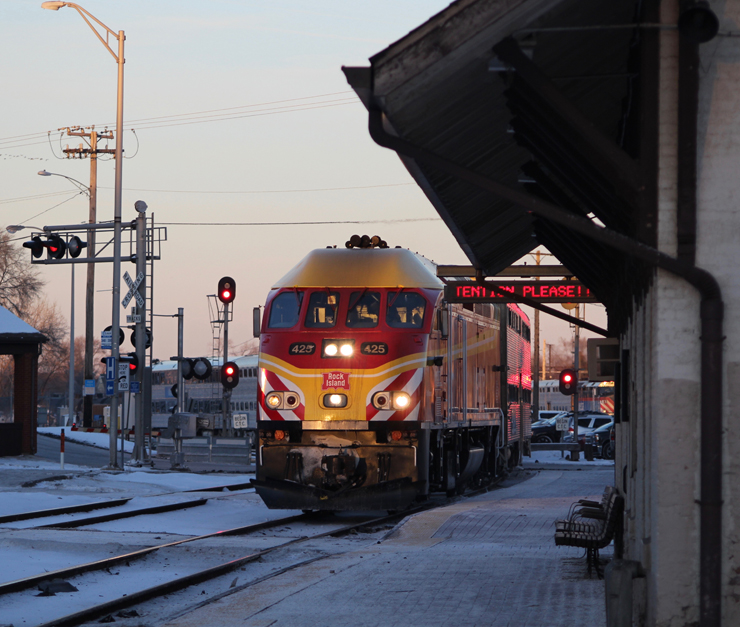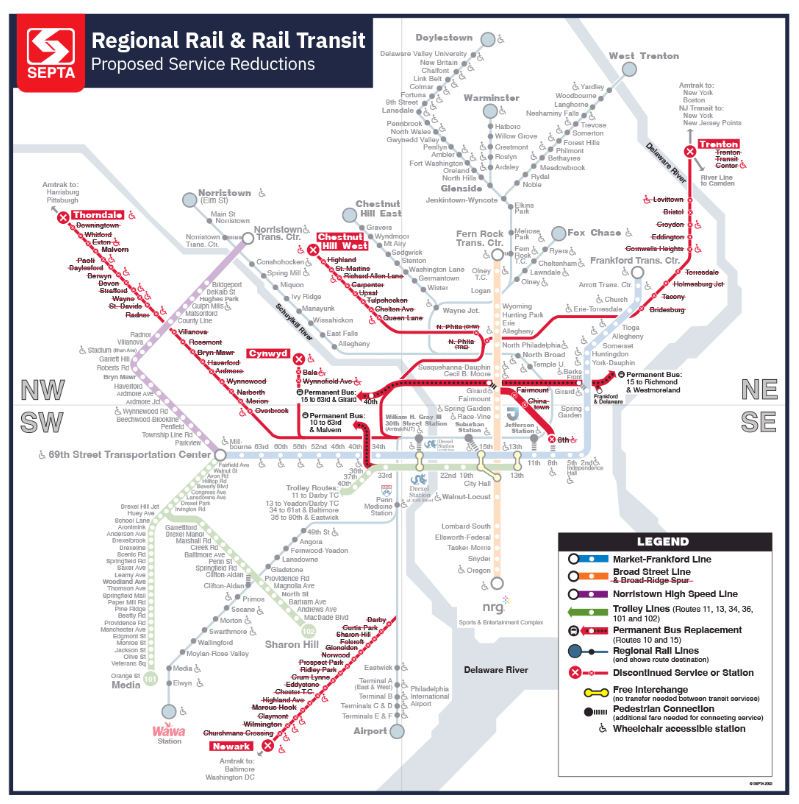CHICAGO — Metra will roll out a revised schedule for its Rock Island District on Jan. 28. The schedule reflects changes required under operation with positive train control, as well as adjustments reflecting rider comments on its earlier schedule proposal. [See “Metra releases proposed Rock Island schedule for PTC operation,” Trains News Wire, Oct. 17, 2018.]
Adjustments cited by Metra in a press release include restoration of the departure times for two outbound trains from LaSalle Street Station, conversion of one train into an express, and new trains that arrive downtown before 6 a.m. and depart at 7:05 p.m. The new schedule is available here. Metra is calling it a “pilot schedule” that will be evaluated for several months.
The new schedule reflects the increased time for trains to “flip,” or head in the opposite direction after completing a run. That process requires more than 10 minutes, which required changes to schedules for about a dozen trains. Those changes, in turn, affect other trains.
Metra’s BNSF line underwent a similar process with a proposed and adjusted schedule before beginning operation under PTC in 2018. [See “Metra begins service with new BNSF schedule,” Trains News Wire, June 11, 2018.] Other Metra lines will begin PTC operation later this year and in 2020.
















Steven PTC or no PTC, ten minutes is tight to turn anything around. (Bathroom stop anyone?) Thank you for your service. You serve us in two ways, driving a train then posting on this board.
10 minutes to “flip” the direction of a train? How can that be? How long do PTC systems in other countries take to reverse the direction of a train? If a freight train under PTC stalls on a hill and has to take a second run at it, does the railroad loose 10 minutes for PTC to “flip” for each change of direction? That would be an extra 20 minutes plus the actual time to back and run forward again.
Curtis, for the record, I dont work the Rock Island side so not real sure of some of their turn times on the rush hour trains that do have flips My point for Roger was that for the jobs that do have tight turns (I know of a couple where I am at that have eight minute turns from arrival to departure back), 10 minutes leaves little wiggle room for cutting out, changing ends, cutting in, and leaving, particularly now that PTC is factored in. And that is provided there were no delays on the way out.
Mr. Bauer,
The whole community thanks you for providing the interesting “SOP” for the Metra service you do.
Roger, the concept of a commuter train “flipping” means it is at the end point of its run and will “reverse direction”, so to speak, and head back the other way whether it be an outbound becoming and inbound run or vice versa.
Here is what my routine consists of:
On my initial run out in the morning (I run against the current of the inbound fleet), I log into the PTC and perform all my other required tests and such. When I get to to the outlying station, I set the brake and log out of the PTC system. Now, I have to cut out the brakes on the locomotive end, and a crew member on the cab car end cuts in the air. Again, the required brake and power tests have to be performed. Now with that done, I have to walk to the other end of the train (9 cars). Once in the cab, now I have to log into the PTC system. You have to have a completely different set of bulletins for this since you cant just use existing bulletins anymore for your return trip. I have gotten that down to about four minutes PROVIDED the system is working as it should. By that I mean it depends a lot on how much time elapses between the time i actually hit the enter button when submitting requested data, and HAL (the PTC screen) puts the next set of information up on the screen. I have had instances where I have started initializing the PTC 10 min before a departure and did not get it initialized until just about departure time due to waiting on the required data on the screen to come up if HAL is slow communicating with the “Mother Ship.”
As you can see now, “flipping” a commuter train is not a simple as just changing direction and going in reverse.
It’s not the change of direction itself; the train is not simply “reversing”. It is an entirely new train, with a new number, new head end identification, whether loco or cab car. It’s the initialization of the PTC system at the new leading end that takes the extra time. And the analogy of the stalled freight doesn’t work. A given train can operate in reverse for a short distance under PTC if necessary and authorized by the DS.